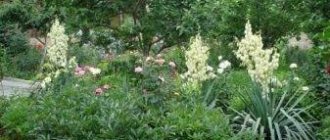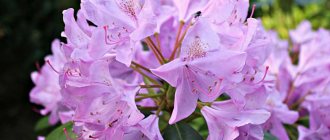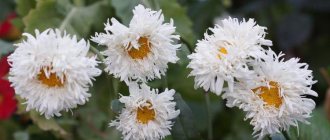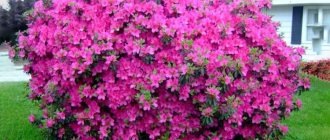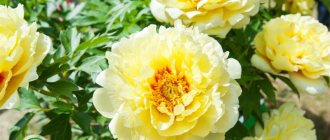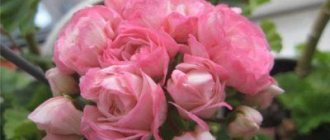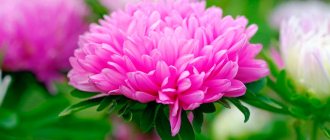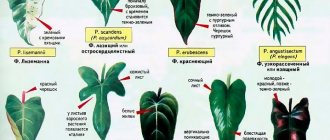In recent years, garden azaleas have been actively gaining popularity among gardeners in the Moscow region. Not only its flowering is fascinating, but also the interesting shape of the crown with foliage that is pleasant to the touch.
Azalea (deciduous rhododendron, as it is sometimes called) is not an evergreen shrub. Depending on the variety, the final height varies, but usually does not exceed 200cm. There are also small specimens, the crown of which grows only a meter and a half. Thanks to such dimensional diversity, you can always choose the most suitable variety for specific conditions.
History of appearance and description of the bush
The homeland of the Japanese subspecies of rhododendrons is Japan; it is not for nothing that the appearance, especially the flowering, of the tree resembles the symbol and pride of the land of the rising sun - sakura. It appeared in Europe in the 1860s, and since then breeders have begun to develop new varieties based on it.
Japanese salmon rhododendron
Description of the plant
The shrub belongs to the Ericaceae family of the rhododendron genus. The low tree grows up to 2 m in height and spreads 1.5 m wide. The leaf blades are green with small and fine hairs on the surface.
For your information! Although the tree is nicknamed "pink", the flowers of the Japanese salmon rhododendron are pink-orange, while other varieties produce white and yellow flowers.
Since Japanese rhododendron is a deciduous tree, as autumn approaches the foliage turns orange, then dries out and falls off.
Due to the abundant flowering, from afar it seems that the tree has absolutely no leaves. The buds are collected in inflorescences reaching a diameter of up to 10 cm. One inflorescence can include up to 12 buds. It begins to bloom at the end of May and continues throughout the summer.
View during flowering
About soil
Regardless of the variety and type, indoor azaleas prefer the same soil composition - peat. You can buy it in flower and gardening stores, where you can sometimes find prepared mixtures designed specifically for growing these specimens (with a special level of acidity), as well as with a mineral composition. As practice shows, soil mixtures consisting of heather masses mixed with pine needles will be excellent options for growing flowers. As well as compositions intended for the cultivation of acidophilic plants.
In their reviews of growing indoor plants, many gardeners note that peat soil tends to dry out quickly, which subsequently negatively affects the health and flowering of the shrub. An indoor azalea will no longer look like in our photos if you don’t pay attention to it. It should be noted that this phenomenon is a characteristic phenomenon for peat soils, which is due to an insufficient level of moisture. How to deal with such a problem? In order to make the soil more loose and moist, simply dip the pot with the plant into a container of water and leave it there for a while.
One of the main features of growing azaleas indoors is that this plant does not tolerate loosening the soil, which is associated with excessive sensitivity of the roots.
When choosing soil for your pet, you need to pay attention to its acidity level. For azaleas, the optimal pH is 4-4.5.
Popular varieties of Japanese rhododendron
Rhododendron Helliki: description
Basically, all varieties are hybrids of two varieties of rhododendron: Japanese and azaleas.
The most famous varieties:
- cream. Height is lower than other varieties. The flowers are pastel light green with thin yellow veins;
- yellow. Sprawling bush with chaotic shoots. The flowers are bright yellow, each inflorescence contains at least 20 buds;
- salmon. Frost-resistant tree with orange-pink flowers;
- white. It has white flowers with yellow stamens in the middle.
Indian azalea (Rhododendron simsii)
Varieties obtained through the use of Indian azalea or Sims rhododendron have become the basis for the work of many breeders and amateur gardeners.
In room conditions, due to the restriction of the root system and regular pruning, these shrubs, like the Japanese azalea, are compact and small. Usually they can be kept within 40–60 cm. But in the garden, indica azalea reaches a height of one and a half meters or more. Moreover, there are plants with different flowering periods, shapes, colors and sizes of corollas.
Compared to the Japanese variety, the Indian azalea has larger and more decorative flowers.
Variegated varieties with contrasting markings in the center of the corolla or an original border along its edge are not uncommon. An example of this type of azalea is the Stella Maris plant with snow-white flowers decorated with crimson splashes on the upper petals.
Azaleas flowers can be double or single, with ruffled or smooth edges.
Azaleas of the Albert-Elizabeth variety stand out for their large double flowers, up to 8.5 cm in diameter, with a wide carmine border and wavy edges of the petals. The plants begin to bloom very early, practically ushering in the azalea season in the home and garden.
Despite the abundance of azalea indica varieties, yellow or orange flowers are extremely rare among them, and there are absolutely no plants with blue and purple corollas.
Application in landscape design
Swamp iris, bearded, Japanese, Dutch varietal
Japanese rhododendron is very often used in landscape design. It is used to create park compositions. It is especially popular in the creation and design of parks and gardens in the Japanese style. In addition to group ones, rhododendron is used in single compositions.
Tree in open ground
Watering
The rules for watering azalea bushes vary somewhat depending on the season. During the entire growing season, the plant craves generous watering immediately after each drying of the surface layer of soil. Use soft rainwater, well water or settled tap water. To maintain the optimal level of soil acidity, citric acid is dissolved in this water monthly at the rate of 1 tsp. for 2 l.
In August, the frequency of watering and the amount of water are sharply reduced to signal the plant to begin preparing for the dormant period. This stops the growth of immature shoots that risk being destroyed by low air temperatures in winter. Before the arrival of winter, the azalea is generously charged with moisture to better survive the upcoming frosts. It turns out that you can do without watering without damaging the plant only in rainy summer and autumn.
How to plant Japanese rhododendron
Japanese rhododendron has good frost resistance, so its cultivation is widespread in the western part of Russia and the Urals, but the plant will not take root in all regions of Siberia.
Preparing the seedling and site
Rhododendron Nova Zembla
The seedlings are kept in water until all air bubbles float to the surface. For good survival and strong immunity, the roots are treated with growth activators.
The planting area should be slightly shaded. You need to choose northern places, for example, you can plant a bush next to a building on its northern side. Planting is carried out in fertile, loose areas with high acidity. Groundwater must pass at a depth of at least a meter.
Important! It is not recommended to plant rhododendron next to maple, linden, elm, poplar, linden and willow. Due to the same level of root systems, competition for nutrients will arise. Larch, oak, pear, apple and pine will be good neighbors.
Step by step landing
The bush is planted in open ground in the spring immediately after the end of frost, in April or May. However, autumn planting is also practiced, which can be done from September to November.
First, you need to dig holes about 40 cm deep with a diameter of at least 60 cm. A substrate of loamy soil and peat is poured into the bottom. Seedlings are placed on top of the layer, covered with earth and compacted well.
It is necessary to plant the seedling so that the root collar is at the level of the ground surface. Then each bush is watered generously with settled water at room temperature. It is necessary that the water thoroughly moisten the soil to a depth of at least 20 cm. After this, begin the procedure of mulching the soil. Sawdust and leaves can act as mulch.
Important! If only one seedling is planted, the winds can damage the branches of the tree. Therefore, you need to choose a site next to buildings or build a wooden support to which you can tie the trunk.
Preparing the site
Most types of azaleas and rhododendrons can be grown successfully if the planting site meets the following important requirements:
- it can provide good drainage for plants;
- the place is in partial shade or has the necessary protection from direct sunlight;
- the soil on the site is light or you are able to prepare large planting holes with a complete replacement of the soil in them;
- you can equip an irrigation system or ensure regular watering of the plants; azalea appreciates moisture.
The best areas for growing rhododendrons are shaded, wooded areas, slightly elevated on the terrain. Therefore, the snow melts off them early and does not stagnate; and they are protected from the winds.
Holes for planting should be made three times wider and 2 - 3 times deeper than the lump of earth or container in which you bought the azalea. The soil in the hole should be completely replaced with a mixture of two parts of well-rotted, odorless, light brown humus (using fresh manure or under-rotted humus will lead to the rapid death of the seedling!), two parts of acidic peat and one part of coarse sand. It is also good to add to the soil up to 1/5 of the coniferous litter collected in the forest or finely ground pine bark, which can be bought at gardening markets.
Reproduction
Rhododendron is propagated by seeds and vegetatively:
- layering;
- dividing the bush;
- vaccination;
- cuttings.
Reproduction by layering
The easiest and fastest way is propagation by layering. To do this, in the spring, the lowest branches are dug into holes at least 15 cm deep. To secure the shoot, you need to pin it with metal staples. The top of the shoot also needs to be fixed. It is necessary to tie it vertically to a peg. The next year, the shoot is separated from the main tree and transplanted to the chosen location.
Cuttings are a more complex method of propagating rhododendrons. Strong, long, semi-lignified shoots are cut into cuttings up to 10 cm long. The lower three leaves are removed, and the cutting is placed in a special solution to stimulate growth for half a day. Small pots are filled with a mixture of fertile soil, peat and sand. Each cutting is planted in a separate pot. Afterwards, the soil is watered and covered with polyethylene or plastic bottles cut in half.
For your information! After 1.5-2 months, the cuttings take root, and they are planted in large containers and placed in a cooler, lighted and ventilated room.
How to care for an azalea in a pot and form a beautiful crown
The crown of an azalea can be in the form of a small tree or bush.
Azalea bonsai
- If you want to form a tree, then you need to find the straightest and strongest branch from a small bush. It will serve as the future trunk, on which all other shoots should be removed.
In order to maintain the evenness of the trunk, it is necessary to tie it to some kind of support, not forgetting to regularly rotate it around its own axis.
Once the length of the shoot reaches the size most suitable for you, you need to pinch its top, which will allow the tree to begin to produce branches. In the future, you need to regularly turn the growing tree and pinch the side branches in a timely manner. This will allow you to form a crown on the azalea like a tree.
- If you want to make a bush, then you need to pinch the cuttings, stepping back from the ground about 10-12 cm. The upper parts of the side branches also need to be pinched, not forgetting to turn the plant, which will allow it to be not a one-sided, but evenly developing bush.
Care
Caring for the Japanese salmon species is no different from that for other varieties of rhododendrons. An unpretentious tree does not cause any trouble when caring, but is very demanding in terms of maintenance conditions.
Note! It is necessary to regularly weed the area under the bush, but this must be done manually. The root system of rhododendrons is very vulnerable; hoes and choppers can damage it.
The plant does not need pruning to form a crown. The only thing that needs to be removed is dried and rotten shoots. Sections of thick branches must be lubricated with garden varnish.
The abundant flowering of rhododendron next year may be replaced by scant blooming of buds. In this case, the already faded inflorescences are broken out so that the plant can direct all its energy to laying new young flower buds.
How to water and fertilize correctly
Do not allow the soil to dry out and water the tree with cold and hard water. To soften the water, you can acidify it by dissolving a little high-moor peat in it. If possible, it is recommended to water with river or rain water. It is important that the soil is soaked to a depth of at least 20 or 30 cm. To avoid stagnation of moisture in the soil, the soil is watered slowly so that the water has time to soak properly.
Important! For additional moisture during dry periods, you need to spray the above-ground part of the plant with water from a sprayer.
It is necessary to carry out at least two feedings during the entire active season of the tree. The plant is fed the first time in the spring, and the second time after flowering. It is better to apply fertilizing in the form of liquid fertilizers. A good folk method is fertilizer made from mullein and horn flour. To prepare it, take 100 g of the mixture, dissolve it in a bucket of water and treat the soil with this solution.
To maintain normal soil acidity, it is necessary to add superphosphates, ammonium nitrate, and potassium nitrate.
Transplanting a plant
After the beauty has bloomed for the first time, it is recommended to replant it.
The azalea root system is quite superficial, so it needs to be replanted in a low pot. Also, its roots are very delicate, so you should not loosen the soil around the bush . This was the reason why this type of plant is not replanted, but transshipped.
Do not disturb the earthen ball under any circumstances or try to clear the root system of old soil.
You need to add fresh soil to the container where you will replant the bush. In order for a young azalea to grow and develop well, it must be replanted once a year, carrying out the procedure in the spring. An adult azalea requires replanting once every 2 or 3 years.
Diseases and pests
Japanese rhododendron is not known for its disease resistance. The plant is often attacked by pests, including:
- scale insects;
- bedbugs;
- spider mites;
- slugs and snails;
- weevils;
- mealybugs.
Leaf chlorosis
Very often the tree becomes infected with fungal diseases. Diseases to which Japanese rhododendron is susceptible:
- gray mold;
- chlorosis;
- cancer;
- leaf spotting.
Diseases and pests appear due to improper care, so it is worth caring for the plant more carefully and responsibly.
Fungicides are good against pests; they destroy parasites and disinfect the affected areas. Bedbugs, ticks and weevils are eliminated by spraying the bush with diazinon. The top layer of soil is treated with the same preparation. Fungal diseases are combated by treating with Bordeaux mixture.
Rhododendron in landscape design
With chlorosis, the leaf blades of the tree begin to fade and turn yellow, they become small and stop developing. This happens due to the fact that the formation of chlorophylls is disrupted, the process of photosynthesis is suspended. Spraying the above-ground part of the rhododendron and treating the soil with a solution of iron sulfate help prevent chlorosis.
Rhododendron deciduous Japanese salmon is a popular representative of the genus of the same name. Thanks to its beautiful appearance, the tree will decorate any park ensemble and garden composition.
Trimming
Sanitary pruning is carried out after wintering, since by this time the flower buds have already formed. Cut off weak, damaged, unhealthy and dried shoots. Formative pruning is done after the flowers have faded. Excessively elongated branches and dry flower stalks are cut off.
Pruning is an important stage in the life of any rhododendron that has reached 3 years of age. They should not be neglected. Otherwise, in a few years the bush will grow so much that the shoots will thicken the crown, preventing the penetration of air and light. This situation can give rise to the development of diseases and damage by harmful insects. Young bushes are in no hurry to form: it is only appropriate to remove lifeless shoots.
When pruning azaleas, you need to know that the current year's growth is preserved, since the buds are formed on annual shoots. It is important not to forget to traditionally treat the cut areas with garden varnish.
Origin, natural habitat
Rhododendrons is the name of a genus that includes many species of deciduous, semi-evergreen and evergreen shrubs and trees.
To create the most favorable environment for development, it is worth remembering their habitat. The geography of distribution is quite wide. These amazing shrubs prefer places with high humidity - the coasts of seas, oceans, and large rivers. You can meet them in semi-shaded areas or on the northern slopes of the mountains. The soil in the growing areas is acidic, rich in nutrients and well permeable to moisture.
